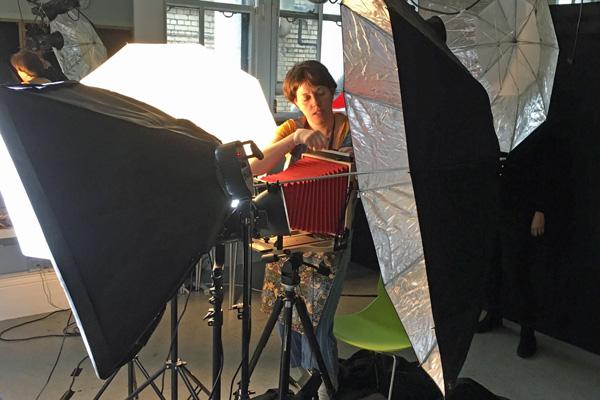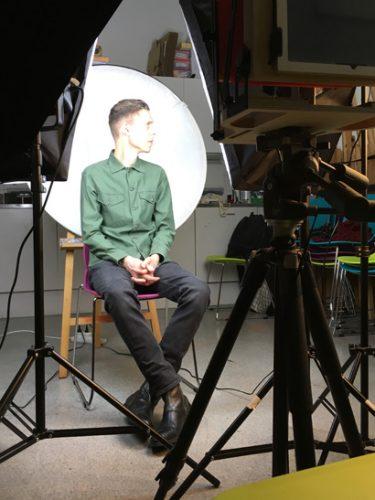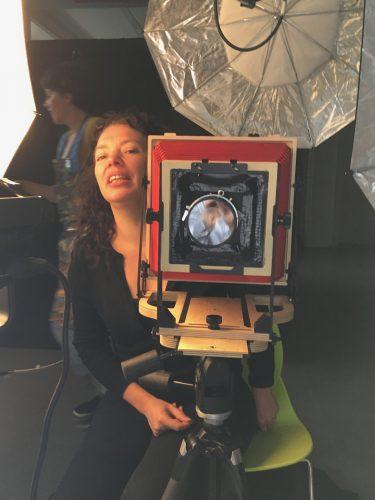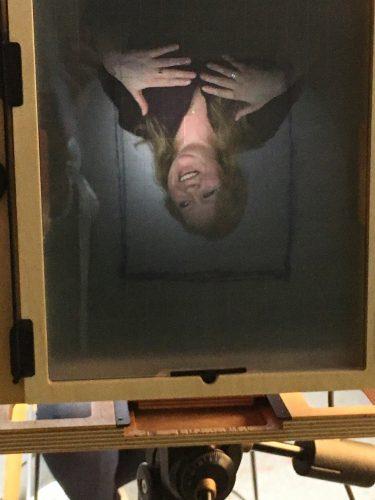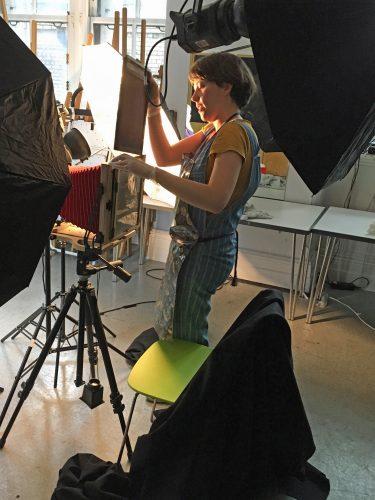Collodion underpinned the birth of art photography. Some of this was shown in the 2018 NPG exhibition on Victorian Giants. I’m mainly working digitally now – but collodion offers a much more physical process. You’re not going to take scores of shots and spend time picking the best one. And you can’t just press undo when you’re manipulating the images!
I wanted to see collodion close up. So I signed up for what I thought was actual hands-on doing, but turned out to be a selfie opportunity.
The image above gives you an idea of some of the stuff you need – the camera and all the lights anyway – since this doesn’t show the pop-up dark room. Here are some images showing what goes on:
There’s lots of fine-focusing of the image, and then the loading of the film:
Then comes the exposure. It’s exactly like that bit in old films when the photographer, covered in a cloak, takes the lid off the lens and the subject has to stay still. Very still! For ages!
I worked out exactly why everyone looks so serious in Victorian photos – it’s physically impossible to keep up a static smile for as long as the exposure needs to be.
Which explains my weird expression in my picture!
After the exposure, the plate has to be developed. In a dark-room (we had a pop-up dark room in the NPG), first developer solution and then water is poured onto the plate.
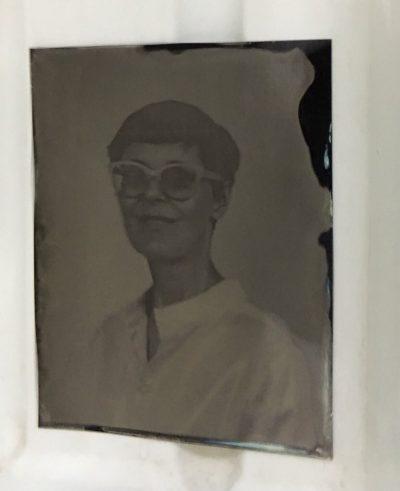
Three short films here from Almudena Romero, demonstrate wet-plate collodion photography and albumen printing techniques :
- Starting with the preparation of the glass plate that is to become the negative;
- Demonstrating the process of developing the image. Developer solution is poured onto the plate, and the sitter is revealed . Water is then poured onto the plate, to stop the developing process
- To print from the glass negative, a bath of silver nitrate solution sensitises the albumen-coated paper before it is put into contact with the negative. UV light then exposes the image. Water is used to stop the exposure process, setting the image.
Or there’s a video here below with a step-by-step guide to wet plate photography. If anyone tries this out, please let me know! I’d love to see your results!
